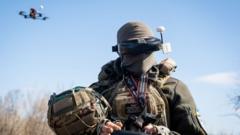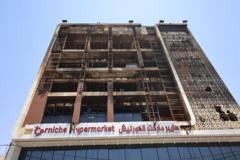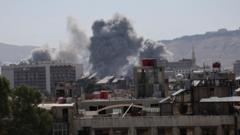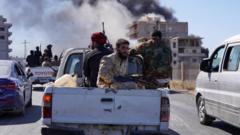Data reveals that Russian forces are suffering extensive casualties in Ukraine, with at least 27 soldiers dying for every square kilometer captured, leading to a sobering total that far exceeds earlier war losses.
Grim Toll of War: Russia's Rising Soldier Fatalities in Ukraine
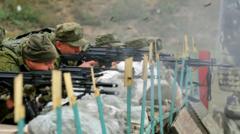
Grim Toll of War: Russia's Rising Soldier Fatalities in Ukraine
The ongoing conflict in Ukraine sees unprecedented Russian military losses, with 2024 marking the deadliest year yet for its forces, highlighting the stark realities of warfare.
Last year marked a grim milestone for Russian forces engaged in Ukraine, with reported casualties reaching at least 45,287, nearly tripling the loss figures from the initial invasion year. The nature of losses evolved through 2024; the once wave-like patterns of fatalities transformed into consistent monthly increases as the front line advanced gradually. This led to a staggering calculation of Russian deaths—at least 27 soldiers per square kilometer of Ukrainian territory taken.
This ongoing analysis, spearheaded by the BBC Russian Service in partnership with Mediazona and volunteer groups, has so far identified 106,745 names of Russian soldiers killed since the conflict intensified. However, these figures may encapsulate only a fraction of actual losses, with a military expert suggesting the confirmed deaths could represent just 45% to 65% of the total, estimating a true toll of between 164,223 and 237,211.
Notably, February 20, 2024, emerged as a particularly deadly day for the Russian military, with losses including soldiers from the 36th Motorised Rifle Brigade, who were killed by a Ukrainian missile strike aimed at their training base in occupied Donetsk. Among them were young conscript Aldar Bairov, who was only 22, and veteran welder Okhunjon Rustamov, 31, further highlighting the personal tragedies encompassed within this extensive conflict. On this day alone, the count reached 201 dead, yet the conflict continued to be portrayed positively by high-ranking officials, showcasing a stark disconnect between the military's realities and public communication.
The casualty reports reflect a broader trend in the conflict, where earlier periods of intense fighting gave way to persistent attrition, characterized by scattered, bloody assaults and tactical mistakes leading to high death counts relative to advantageous ground secured. Central to this is the ongoing engagement in regions such as Avdiivka and Vuhledar, where tactics have significantly magnified soldier fatalities.
Despite the mounting losses, Russia has adapted its recruitment strategies, cushioning the frontline with new formations that reportedly have begun to outpace the casualty rates. Recruitment drives surged, incentivizing soldiers with substantial pay increases in certain regions, attracting those desperate for financial relief, some of whom had no prior military experience.
As the brutal conflict persists, the implications of such staggering loss figures evoke grim realities, with comprehensive data on casualties remaining elusive due to the dangerous conditions surrounding body recoveries and the fact that many fatalities may remain unaccounted for. Moreover, the toll may increase substantially when considering those from proxy forces engaged in Ukraine.
This war, now characterized by overwhelming loss and dire consequences, underscores the deepening human cost as battles continue to rage across the landscape of Ukraine, with no immediate end in sight.



